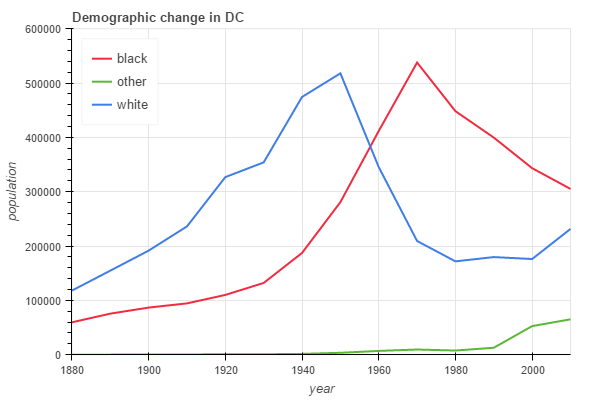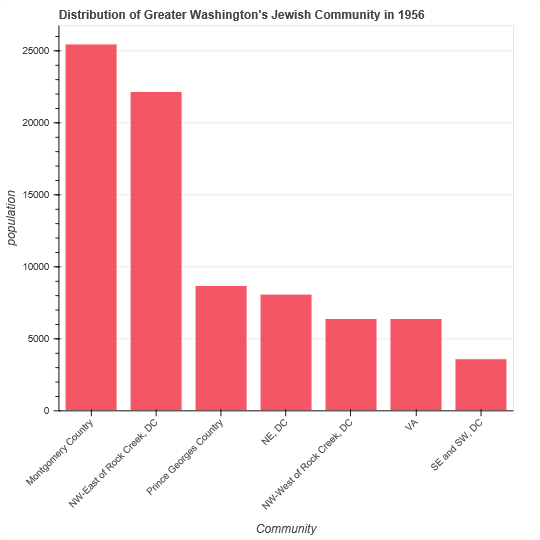The Exodus DC's Jewish Community from the City Center (and their Eventual Return)
Beginning in the 1950s, synagogues and other Jewish institutions left DC's central commercial corridors for Upper Northwest and Maryland, and they didn't return until the late 1990s. This interactive chart depicts the Jewish community's proximity to the US Capitol over time.
Washington's Jewish community was relatively small in 1920s, standing at less than 15,000 members. It was largely concentrated in neighborhoods that didn't allow black residents, as northern cities were segregated at that time due to a combination of whites' aversion toward living with African Americans as well as institutions like racially-restricted covenants.
It should be noted, however, that Jews faced housing discrimination—
In the 1940s, the legal foundations of DC's restrictive covenants were weakened, meaning the city's African Americans weren't boxed into subneighborhoods. Also, DC suffered a severe housing shortage during World War II, with the capital's population booming while construction material and manpower were diverted to the war effort.
Those two factors led to DC's white population falling precipitously after the war, with whites taking new federal highways to newly-built outlying areas and buying first homes with GI Bill loans that, for them, were easy to come by.

In the 1950s, greater Washington was the sixth largest Jewish community in the United States, with 81,000 people (today it's ranked fifth in the US). Half of that population already lived outside the city, mostly in Montgomery County, which you can see here:

A 1956 survey captured DC's remaining Jewish community in the midst of the change, two years after the District's schools desegregated. The survey found large percentages of Jewish families planned to move within six-months, mostly to Montgomery County and neighborhoods in the northwest part of the city, west of Rock Creek Park: 21% of families planned to leave the northeast quadrant; 25% planned to leave neighborhoods in the southeast and southwest quadrants.
Even in many neighborhoods in the part of DC's northwest quadrant that's east of Rock Creek Park, the bastion of Jewish DC, 16% planned to move. Beginning in the 1950s, the Jewish community also had more options in the outlying areas. Among the most appealing destinations were new subdivisions built by Jewish real estate developers in areas of Montgomery County like Silver Spring. Kemp Mill attracted an Orthodox Jewish community. Langley Park in Prince George's County become predominantly Jewish in the 1950s.
Data and code for this article.